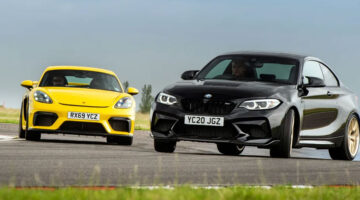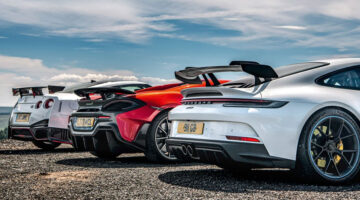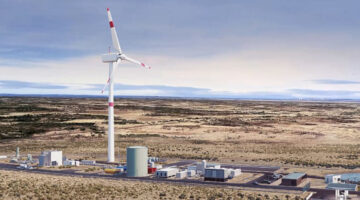“Plus, we wanted to complete the car with a turbo: it was the first time racing long distance with turbo engines at Le Mans. But you had to find the balance, and you needed to have a very, very light car. The 911 was only 820kg, but the engine, the intercooler and the turbocharger was all behind the rear axle. That meant we had a 30:70 weight distribution towards the rear, which was unbelievable. So we really had to work hard on the aerodynamics. Two years after that, we started the 935 project. That was based on the 911, so we learned in the years before what we could use after, and that really helped speed up the process.”
Though the 935 ‘only’ took a single overall victory at La Sarthe in 1979, its significance is beyond question. Demonstrating devastating speed thanks to its 3.2-litre six-cylinder (the most powerful engine ever placed in a 911 at that time), the 935 topped a whopping 365kph along the Mulsanne Straight and even outsprinted Tyrrell’s famous six-wheeled P34 Formula 1 car around the Paul Ricard circuit during testing in 1975. Clever aerodynamics and ground effect, thanks to a loophole in the FIA’s sporting regulations, meant the 935 and its now legendary long tail ‘Moby Dick’ counterpart would have steamrolled the 1975 World Sportscar Championship were it not for tightened regulations mid-season. Alongside the open top 936 – which used a higher boosted version of the six-cylinder albeit mounted directly to the rear frame for added stiffness – the 935/6 combo took every major sportscar championship in 1976 and lost only twice at Le Mans from 1977 to 1981.
An incredible achievement, the secret to which – according to their creator – lies in the details.
“When you have a problem and you don’t finish the race, you learn the most because you know what you have to do. This is easy. But when you have won a race, you still have to check all the parts for cracks, or see if there’s anything you can improve. So you should not rest on your laurels. No no, you always have to look at what could have gone wrong.
“When you have won Le Mans once, and you can continue with a car because the regulations do not change, you know you have had success but there are also a lot of things you want to modify to make the car faster, or more reliable. So you have some ideas during that first development which you cannot get in because you learn this during the race. You’re always learning.”
The arrival of the 956 in 1982, however, demonstrated what Porsche was really capable of. Running a long wheelbase with upward rear tilt for greater downforce, a centre keel to optimise underbody ‘suction’, and a modified version of the 936’s six-cylinder engine, the 956 was also the first Porsche sportscar to run an entirely aluminium monocoque, offering as it did unparalleled stiffness and balance. Having run faultlessly during pre-season testing at Paul Ricard and Silverstone, the new Group C monster took first in-class and second on its 1982 World Sportscar Championship debut. Today the 956 and its 962 evolution stand as arguably the greatest sportscars ever produced, taking four world championships on the bounce from 1982-1985 and six Le Mans victories in succession (between 1981 and 1987, Porsche remained unbeaten at La Sarthe). The key to it all, however – the monocoque – proved more difficult than expected to bring to develop.
“We had to learn how to build a monocoque, which we had never done before, Norbert continues. “And we had to get ground effects working on a sportscar. So it was really a lot of new things, done in a timeframe of months rather than years. Lotus had already used ground effect in Formula 1” – the Lotus 79, which gave Mario Andretti the 1978 F1 championship – “but getting these ground effects to work on a sportscar is a completely different world. Of course we started by thinking ‘the F1 people did it like this’, and we copied. And it does not work at all!
“It was clear that we had to ask people, so I went to the aerospace people in Germany and they explained to us in two hours how to build a monocoque. And that was it. Then we actually had to try it! There was pressure of course, but it was only after Le Mans that we realised the pressure we were under. You are so concentrated on your work you don’t care about the pressure from somebody else. You know what you want to get and you try to get it.
“So yes, the first win at Le Mans with the 956 in 1982 stands out. Everything was new, except the engine, which had already run in a similar spec the year before. I think from the first idea to the first race at Silverstone, it was nine months. The decision was made in July and we started working in August!”
– FULL GALLERY OF SHOTS FROM THE PORSCHE MUSEUM AVAILABLE HERE – CLICK –
INTERVIEW CONCLUDES ON PAGE 3



